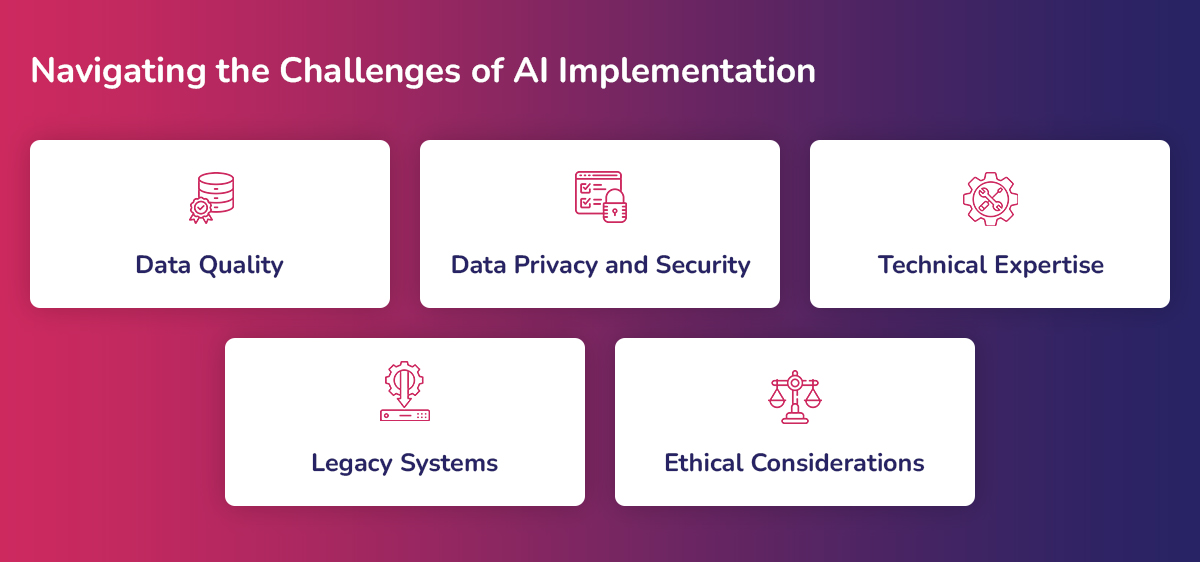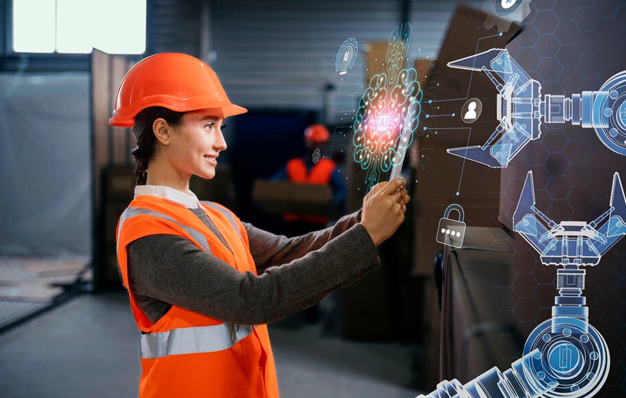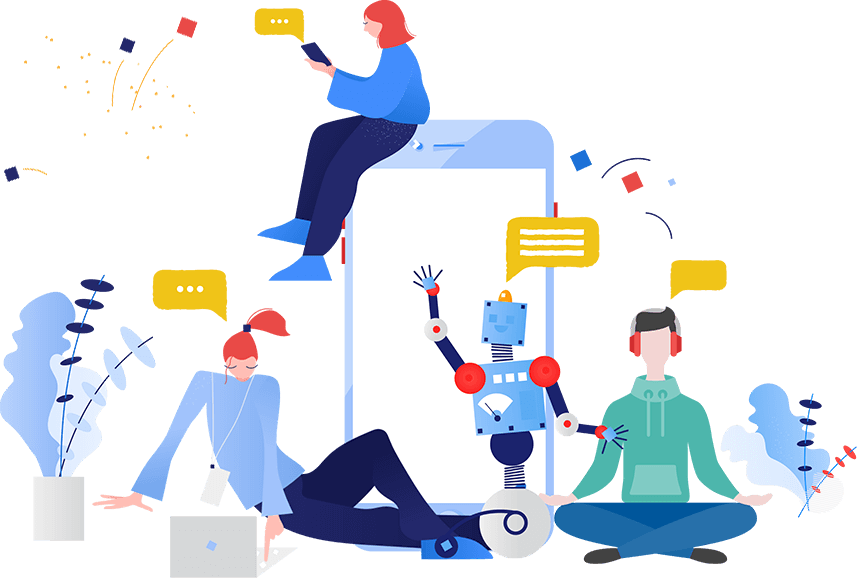Imagine a world where your shoes adjust to your walking style, your home anticipates your mood, and every product seamlessly integrates with your life. This isn’t science fiction; it’s the future of product engineering powered by Artificial Intelligence (AI).
AI’s boundless learning capacity is revolutionizing how we design, develop, and experience products. As Alvin Toffler prophetically stated, “The illiterate of the 21st century will not be those who cannot read and write, but those who cannot learn, unlearn, and relearn.” AI empowers product engineers to embrace this continuous learning process, constantly adapting to meet evolving consumer demands and technological advancements.
The Rise of the AI Co-Pilot
Picture a team of engineers and designers collaborating with an AI assistant, not just a tool, but a tireless co-pilot. This AI companion can sift through mountains of data, identify patterns, and generate innovative solutions. It can analyze designs for optimal performance, predict potential problems, and suggest groundbreaking features, all fueled by its vast knowledge and expertise. Imagine an AI that can analyze user reviews to identify common pain points with a product, and then suggest design changes to address those issues before they hit the production line.
Beyond Assistance: Pushing the Boundaries
AI’s role extends far beyond mere assistance. It empowers engineers to push the boundaries of what’s possible. Imagine self-driving cars that adapt to driving styles in real time, adjusting braking distances and steering patterns for optimal safety and comfort. Consider homes that adjust to their occupants’ needs, automatically adjusting the thermostat based on body temperature or dimming the lights as evening approaches. Envision medical devices that not only diagnose but also predict the likelihood of future health problems, allowing for preventative measures to be taken. AI unlocks a future where products are not just technologically advanced, but also intelligent, intuitive, and attuned to the ever-changing world.
The Transformative Power of AI in Action:
- Design Optimization: AI algorithms analyze vast data sets to identify trends and patterns, enabling engineers to optimize designs for superior performance, cost-effectiveness, and manufacturability. For instance, AI-powered design tools can analyze stress and strain data, pinpointing potential weak points in a product before it’s even manufactured. Companies like Toyota use AI to design more fuel-efficient cars by analyzing wind tunnel data and driving simulations. Imagine using AI to design a new type of athletic shoe, feeding the AI data on different running styles, foot shapes, and impact forces. The AI could then generate multiple design options optimized for various running styles and needs.
- Predictive Maintenance: Imagine anticipating problems before they occur. AI-powered predictive maintenance systems monitor product performance data (vibration, temperature, pressure) to identify anomalies that signal potential issues. This allows engineers to schedule maintenance proactively, preventing costly downtime. GE utilizes AI to monitor the health of its jet engines, predicting potential failures up to 30 days in advance. This technology can be applied across industries. Imagine wind turbine farms using AI to predict issues with turbines before they fail, preventing costly repairs and downtime.
- Personalized Products: In today’s consumer-centric world, personalization reigns supreme. AI revolutionizes product personalization by enabling companies to gather and analyze vast amounts of user data, creating customized experiences. This shift caters to the growing demand for products that cater to individual preferences and needs. Companies like Nike use AI-powered recommendation engines to suggest shoes based on a customer’s foot scans, walking patterns, and purchase history. Imagine a company that uses AI to personalize a home entertainment system. The AI could analyze a user’s viewing habits and suggest new content or automatically adjust settings based on the time of day or the mood the user wants to create.

Navigating the Challenges of AI Implementation
While AI unlocks groundbreaking innovation, challenges exist. Here are the key hurdles and how to overcome them:
Data Quality: AI thrives on high-quality data for effective training. Incomplete, inconsistent, or biased data hinders its effectiveness. Companies can address this challenge by implementing data quality checks and ensuring they are collecting data from reliable sources.
Data Privacy and Security: Data used for AI training often contains sensitive information. Keeping it secure from unauthorized access is paramount. Secure private AI solutions exist, like training large language models on client data within a company’s intranet. Companies need to prioritize data security measures and be transparent with users about how their data is collected and used.
Technical Expertise: Implementing AI requires data science, machine learning, and software engineering expertise – a tall order for many organizations. Companies can address this challenge by partnering with AI development firms like QeDatalab or by investing in training programs to develop their own internal AI expertise.
Legacy Systems: Integrating AI with outdated systems can be challenging and may necessitate significant changes to existing infrastructure. Companies can address this by prioritizing the integration of AI with newer systems or by investing in upgrades to make legacy systems more compatible with AI integration.
Ethical Considerations: AI’s wide-ranging impact raises ethical concerns like bias, privacy breaches, and job displacement. Companies need to carefully consider these concerns and develop responsible AI strategies. This includes implementing fairness checks in AI algorithms, ensuring user data privacy, and preparing workforces for the changing landscape of AI-driven automation.
Despite these challenges, the benefits of AI in product engineering are undeniable. Companies are actively working on overcoming these hurdles. Successfully navigating them not only boosts operational efficiency but also positions companies for a competitive edge in the marketplace.
The Enthralling Future of AI in Product Engineering
The future of AI in product engineering is brimming with potential, transforming every aspect of product development, from initial concept to deployment and ongoing maintenance. Let’s delve into some of the exciting trends shaping this transformative journey:
Automated Design Brilliance: Imagine AI as a design genius, automating the design process by generating numerous options based on user requirements and feedback. It can also optimize designs by considering factors like cost, durability, and manufacturability. This frees up engineers to focus on more strategic aspects of the design process.
Predictive Maintenance Mastery: AI ushers in a new era of proactive maintenance. Using predictive analytics, AI can anticipate potential issues before they arise, minimizing downtime and reducing maintenance expenses. Imagine connected cars that can alert drivers to potential problems before they become major breakdowns, saving time and money.
Streamlined Manufacturing Efficiency: By automating complex manufacturing processes, AI minimizes errors and enhances productivity, streamlining operations. This allows for faster production times and potentially lower production costs.
Elevated Quality Control: AI’s analytical prowess boosts quality control by examining sensor data and identifying flaws in real time. This not only improves product quality but also reduces the need for manual inspections.
Tailored Product Personalization: AI takes personalization to a whole new level, crafting products that cater to individual preferences. Imagine a refrigerator that automatically adjusts temperature settings based on your grocery shopping habits or a fitness tracker that personalizes workout routines based on your fitness goals.
Seamless Communication Advancement: With natural language processing, AI bridges the gap between users and products, making interaction effortless.
Imagine smart home devices that understand natural language commands or appliances that can provide troubleshooting assistance through voice interaction.
By embracing these trends, AI in product engineering paves the way for a future characterized by efficiency, precision, and superior user satisfaction. Organizations that harness the power of AI will gain a significant competitive edge and usher in a future where product engineering transcends existing boundaries.
QeDatalab: Your Partner in AI-Powered Innovation
As we navigate the exciting yet uncharted territory of AI-driven product engineering, partnering with a company possessing the expertise to unlock its transformative potential is crucial. QeDatalab, with over two decades of experience in AI and Machine Learning services, stands at the forefront. We create cutting-edge solutions that empower businesses to leverage AI for unprecedented product innovation.
Our proven track record demonstrates how AI can be seamlessly integrated into product engineering, unlocking a world of possibilities. To embark on a journey of groundbreaking innovation and achieve excellence in product engineering, contact QeDatalab today. Let’s collaborate to shape the future of product engineering, where AI isn’t just a tool, but a transformative force driving a new era of possibilities.







